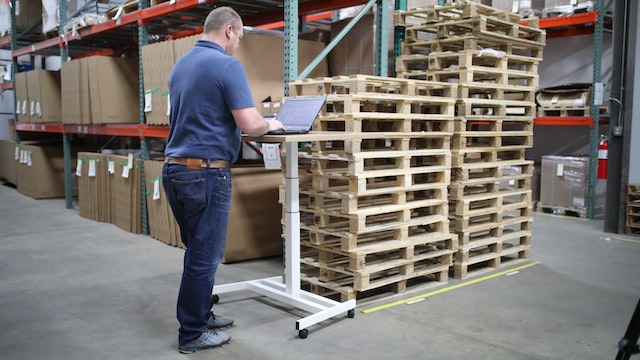Wireless Surveys for Warehouse, Industrial and Manufacturing Sites
Type of Wireless Surveys for Warehouse Sites
Professional Team, Tangible results to improve your wireless network.
By conducting a WiFi site survey and implementing the recommendations from the survey including Warehouse Cabling, businesses can improve the coverage and performance of their WiFi network in a warehouse, ensuring that devices can connect quickly, efficiently and securely.
Type of Wireless Surveys for Warehouse Sites
There are several types of site surveys that can be done to identify the coverage and performance of a WiFi network in a business warehouse:
Passive Site Survey: This type of survey is used to identify the existing coverage of a WiFi network. The surveyor will walk around the warehouse with a device that can detect WiFi signals and record signal strength, channel, and other information. This type of survey can be used to identify areas of weak coverage and potential sources of interference.
Active Site Survey: This type of survey is used to test the actual performance of a WiFi network. The surveyor will walk around the warehouse with a device that can connect to the WiFi network and measure the actual throughput, signal strength, and other performance metrics. This type of survey can be used to identify areas where performance is poor and to identify potential bottlenecks in the network.
Predictive Site Survey: This type of survey is done using specialized software that can simulate the coverage and performance of a WiFi network based on the floor plan of the warehouse, the location of access points, and other information. This type of survey can be used to identify potential coverage and performance issues before the network is actually deployed, allowing you to make adjustments before deployment.
RF (Radio Frequency) Site Survey: This type of survey is used to identify the RF environment in the warehouse and to identify potential sources of interference. The surveyor will use specialized equipment to measure the RF spectrum and identify other devices that are using the same or similar frequencies.
Hybrid Site Survey: This type of survey combines different types of site surveys to provide a more complete picture of the coverage and performance of a WiFi network. This can include a combination of passive, active, predictive, and RF site surveys.
All of these site surveys are important and can be used to identify potential issues with a WiFi network in a business warehouse, and to make adjustments to improve coverage and performance.

Passive Site Survey
identify the existing coverage of a WiFi network
Active Site Survey
test the actual performance of a WiFi network
Predictive Site Survey
simulate the coverage and performance of a WiFi network
Wireless survey Process
WiFi site survey services for warehouses typically include the following steps:
Planning: This step involves gathering information about the warehouse layout, the number of devices that will be connecting to the WiFi network, and any specific requirements or constraints that need to be taken into account.
Site Survey: This step involves physically visiting the warehouse and conducting a survey to identify areas of weak coverage, potential sources of interference, and other factors that may affect the performance of the WiFi network. This may include a combination of passive, active, predictive, and RF site surveys.
Analysis: This step involves analyzing the data collected during the site survey to identify areas where improvements can be made. This may include identifying areas where additional access points are needed, identifying potential sources of interference, and developing a plan to improve overall coverage and performance.
Report: This step involves creating a report that summarizes the findings of the site survey and provides recommendations for improving the WiFi network. The report may include information such as a heatmap of the coverage, a list of potential sources of interference, and a plan for implementing changes.
Implementation: This step involves implementing the recommendations from the site survey. This may include installing new access points, adjusting the configuration of existing access points, and making other changes as needed to improve the performance of the WiFi network.
Testing: This step involves testing the WiFi network to ensure that the changes made during the implementation phase have improved the coverage and performance of the network. This may include conducting additional site surveys or testing the throughput and signal strength of the network.
Ongoing monitoring and maintenance: this step involves regular monitoring of the network, making any adjustments as needed and ensuring that the network is running smoothly.
By conducting a WiFi site survey and implementing the recommendations from the survey, businesses can improve the coverage and performance of their WiFi network in a warehouse, ensuring that devices can connect quickly, efficiently and securely.
Ready for a Wi-Fi Survey?
Give us a Call or email us for a fast turnaround time. Get in touch with us!


